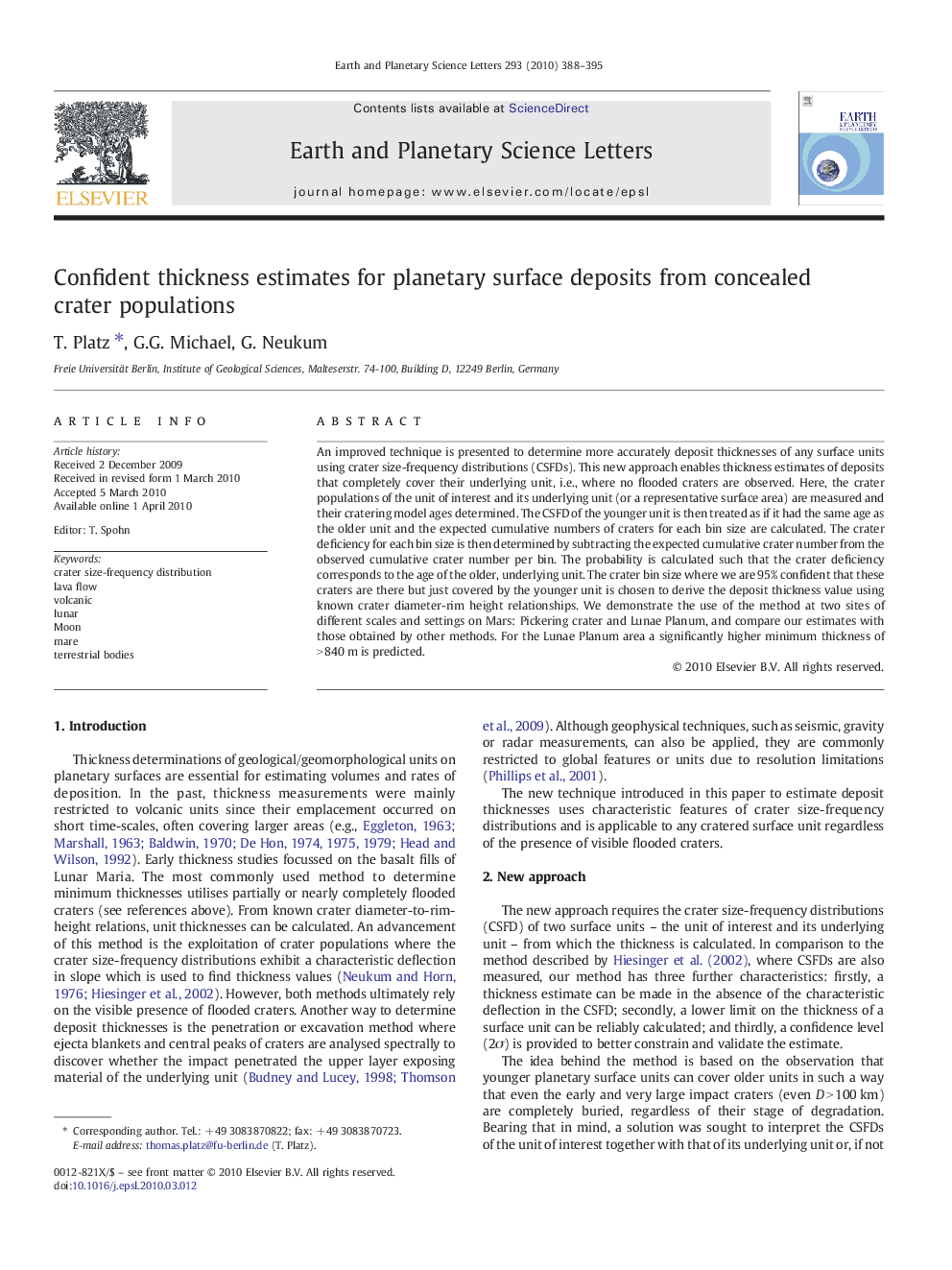| Article ID | Journal | Published Year | Pages | File Type |
|---|---|---|---|---|
| 6431003 | Earth and Planetary Science Letters | 2010 | 8 Pages |
An improved technique is presented to determine more accurately deposit thicknesses of any surface units using crater size-frequency distributions (CSFDs). This new approach enables thickness estimates of deposits that completely cover their underlying unit, i.e., where no flooded craters are observed. Here, the crater populations of the unit of interest and its underlying unit (or a representative surface area) are measured and their cratering model ages determined. The CSFD of the younger unit is then treated as if it had the same age as the older unit and the expected cumulative numbers of craters for each bin size are calculated. The crater deficiency for each bin size is then determined by subtracting the expected cumulative crater number from the observed cumulative crater number per bin. The probability is calculated such that the crater deficiency corresponds to the age of the older, underlying unit. The crater bin size where we are 95% confident that these craters are there but just covered by the younger unit is chosen to derive the deposit thickness value using known crater diameter-rim height relationships. We demonstrate the use of the method at two sites of different scales and settings on Mars: Pickering crater and Lunae Planum, and compare our estimates with those obtained by other methods. For the Lunae Planum area a significantly higher minimum thickness of >Â 840Â m is predicted.
